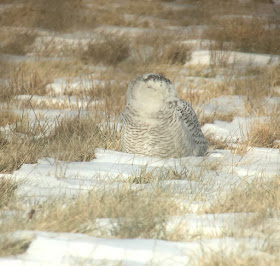
As a teenage birder growing up in Oregon, my favorite book to check out from the Clackamas County Library was
Adventures in Birding, by Jean Piatt. Published in 1973,
Adventures in Birding chronicled the adventures of Piatt and his wife Marybelle as they made journeys around North America trying to find 600 species of birds to join what was then called the 600 club--an informal group of the continent's top birders who had each seen that many species in North America north of Mexico. I loved reading of these birders and their travels, and dreamed of someday seeing the same places and same birds.
Fast forward 30+ years and many birds later, and I was pleased to recently find a first edition copy of
Adventures in Birding (were there actually other printings?) at a used bookstore. I scooped it up, and after getting it home I got a big surprise. Unbeknownst to me, all these years later, I had actually moved to within just a few miles of where Jean Piatt started birding!
Piatt mentions three local birding sites where he got his start here in Delaware County, Pennsylvania--Furness Upper Bank Nursery in Media, Springton Reservoir, and Tinicum wildlife refuge. Tinicum is now the Heinz National Wildlife Refuge--a large wetland area near the Philadelphia airport that I've birded many times since moving to Pennsylvania in 2004.

The Upper Bank Nursery was more of a puzzle, a couple local birders I asked about it didn't know where it was. Some Googling led me to find it just south of Media, less than three miles from my home. This is where Piatt first started birding--in his first chapter, he describes seeing an Eastern Towhee there as the spark bird that got him first interested in listing the birds he found, and the desire to find more. What used to be a local nursery well known for growing many types of bamboo, is now private property, but I was able to find it and take a few pictures.
 |
| Site of the former Furness Upper Bank Nursery on South Ridley Creek Rd in Media, PA |
 |
| Site of the former Furness Upper Bank Nursery in Media, PA less than 3 miles from my home. |
Springton Reservoir is where some Buffleheads fanned the spark for Piatt into a full-fledged birding flame. I've birded there a few times over the past year--if you take a left out of my driveway it is just a 15 minute drive down my road to the reservoir.
 |
| Springton Reservoir just 5.5 miles straight down the road from my home. |
The irony of my having unknowingly or perhaps subconsciously moved to my old birding idol's own stomping grounds has caused some reflection on my own journey, my own adventures in birding and North American bird listing. From my own spark on 10 August 1981 on a week-long school outing to Malheur National Wildlife Refuge in Oregon and the state and county listing of my youth--to the fanning of the flame after my wife and I moved to Washington DC in 1994 and I met some of my first big North American chasers at a Yellow-legged Gull stakeout at Georgetown Reservoir. By this time, 600 was small potatoes, and the top listers had seen well over 700 bird species in North America.
So 700 became my goal over the next decade as we moved to Texas and eventually back out to Pennsylvania. Working for Audubon, I was able to see more and more birds in my work travels around the country, putting me closer and closer to 700 as the club moved on and the top listers started shooting for 800+ species. Then when my Audubon job evaporated in 2009, my travel schedule changed and my North American listing started slow-walking, even as the top listers started hitting 900+ species for the continent. This past year, I finally saw my 700th species in North America, just before the American Birding Association officially added Hawaii to the North American listing region, making 1000+ the new benchmark for top North American bird listers.
Sitting here now, with
Adventures in Birding in hand, and looking back over my own adventures, I am happy for all the birds and places that I've seen over the years, and the wonderful people that I've met. But my own listing goals have come smaller--county and yard listing have become more of my passion the last few years. I can't imagine spending the money required for the multiple Alaska trips necessary to get to 800, let alone 900 or 1000 species for North America. So I don't have a North American listing goal to motivate me beyond the occasional chase for a new bird near me, or perhaps trips to see some of the scattered other species I haven't seen so far.
Over the past decade I've enjoyed more and more foreign research and conference trips--and the birds I've been able to see outside of North America. I've only seen about 14% of the bird species in the world, so there are many more to enjoy--but I currently don't have a listing goal for my world list either, but I do expect to make many more trips and see more birds, countries, and cultures. The world is a very big place for hopefully many more adventures in birding!
 My name is Rob Fergus. I'm an ornithologist. I am almost 50 years old, and I bird in a van, down by the river.
My name is Rob Fergus. I'm an ornithologist. I am almost 50 years old, and I bird in a van, down by the river.













